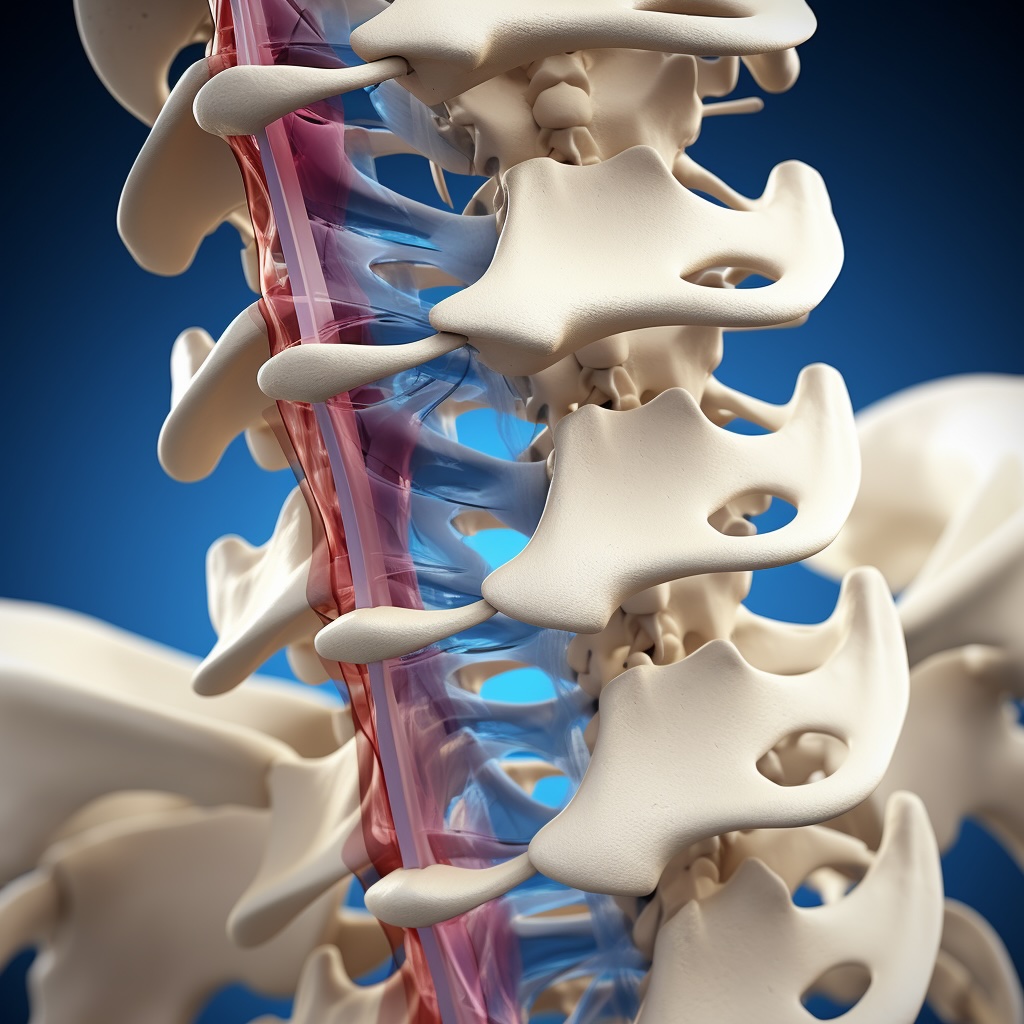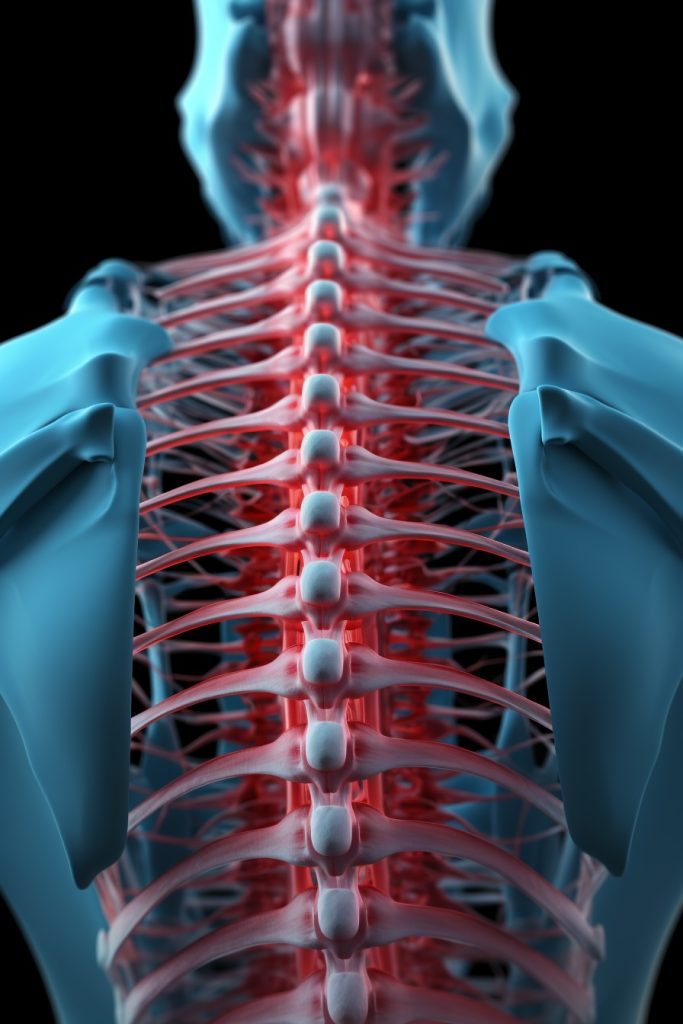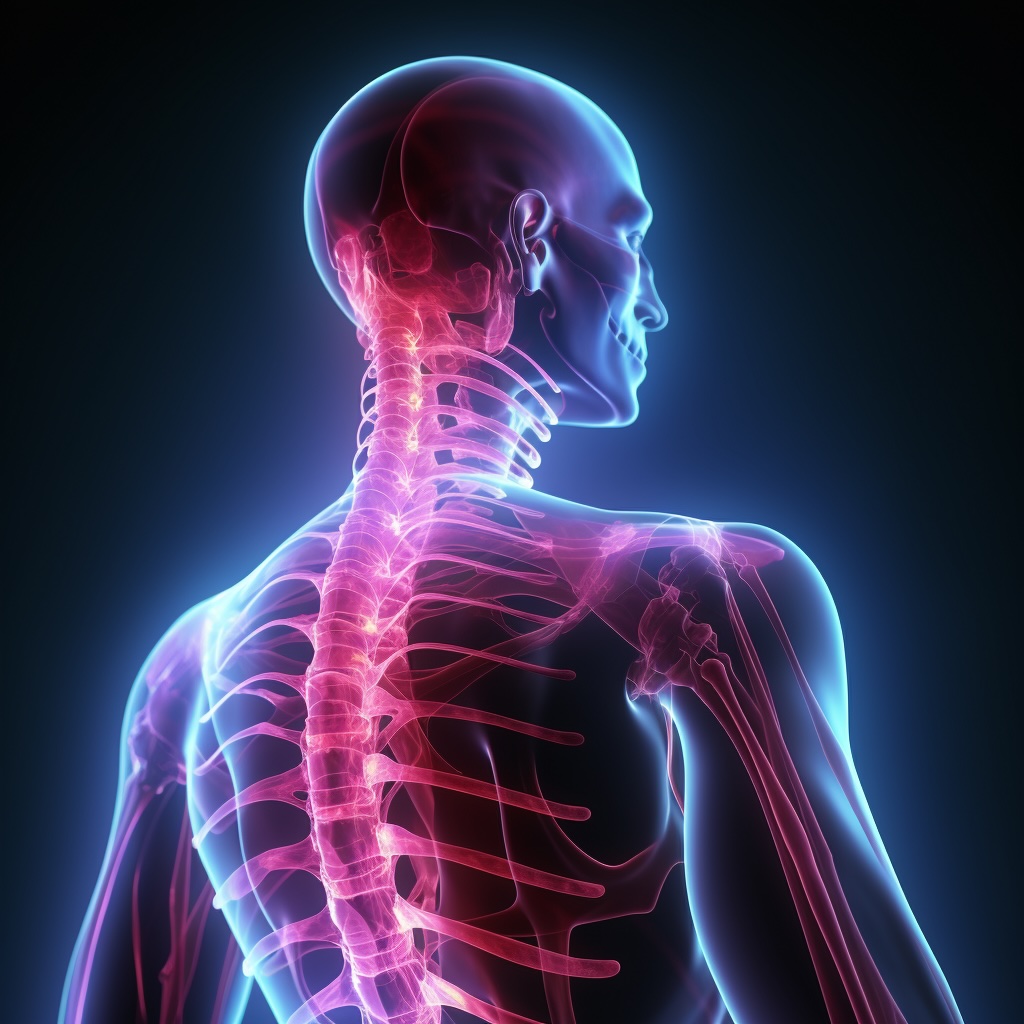Spinal cord injuries (SCIs) represent a significant health concern, often leading to profound changes in an individual’s life. In Ontario, the causes of spinal cord injuries span a broad spectrum. Some examples are traumatic events like motor vehicle crashes and sports injuries being predominant contributors. These injuries not only disrupt the bundle of nerves within the spinal column but also affect the rest of the body in ways that can be life-altering for the injured person. Spinal cord injuries can be catastrophic. Not only do they affect the person with the injury, but also the lives of their family and caregivers.
Understanding spinal cord injuries involves more than just grasping their physical therapy and medical care requirements. It’s important to recognize the chronic pain and mental health challenges that accompany such a drastic change in quality of life. For those living with a SCI, every aspect of life, from mobility and sexual function to blood pressure control, bladder management, the risk of pressure sores, and the risk of blood clots, can be impacted.
Moreover, SCIs can vary greatly in severity. Some individuals experience an injury that leads to total loss of function and muscle control below the injury level. Others might have an incomplete injury, retaining some sensation or movement. Factors like the level of the injury, blood flow disruption, and potential further damage to the nervous system play a crucial role in determining the recovery path and rehabilitation possibilities.
In Ontario, where the average age of individuals suffering from SCIs reflects a diverse demographic, understanding and addressing these injuries is vital. It’s not just about the immediate medical response but also about the long-term occupational therapy, emotional support, and assistive devices that become integral to the lives of those affected.
In this post, we explore the world of spinal cord injuries. We’ll examine their causes, impacts, and the multifaceted approach required for management and prevention.
Understanding the Spinal Cord
The spinal cord plays an indispensable role in our daily functioning. Housed within the protective spinal column, this bundle of nerves is far more than a mere conduit for transmitting nerve impulses; it serves as the vital bridge connecting the brain to the rest of the body.
Anatomy of the Spinal Cord

The spinal cord is integral to the nervous system. It is a complex structure composed of millions of nerve fibers. The spinal cord begins at the base of the brain and extends down through the vertebral column, terminating just above the lower back. The spinal cord is responsible for transmitting crucial signals between the brain and various parts of the body. Understanding its anatomy is essential to comprehend how injuries can affect motor and sensory functions, making the protection of this organ vital for maintaining overall quality of life.
The spinal cord is encased within the bony structure of the vertebral column. This provides both protection and support. The cord itself is divided into different regions: cervical, thoracic, lumbar, and sacral, each corresponding to different parts of the body. This segmentation plays a key role in determining the function and potential impact of injuries at various levels of the spine.
The Spinal Cord’s Role in the Central Nervous System
As part of the central nervous system, the spinal cord functions as the main pathway for transmitting information between the brain and the peripheral nervous system. It not only sends motor commands from the brain to various body parts but also conveys sensory information from the body back to the brain. This two-way communication is crucial for the functioning of both voluntary movements, such as walking or writing, and involuntary actions, like the reflex movements and autonomic responses.
Functionality and Significance
The spinal cord’s role is not limited to a passive transmission of signals. It actively participates in and regulates numerous bodily functions. For instance, it is involved in regulating blood pressure and body temperature, and it plays a crucial role in autonomic functions like bowel and bladder control. The spinal cord also facilitates complex reflex actions, allowing for quick responses to certain stimuli without the need for direct input from the brain.
Injuries to the spinal cord can lead to significant consequences, ranging from chronic pain to complete loss of function in certain body parts. The location and severity of the injury determine the extent of the impact. For example, injuries to the cervical region can affect both arms and legs (quadriplegia), while injuries to the lower regions might affect only the legs (paraplegia).
The process of recovery and rehabilitation from spinal cord injuries often requires a multidisciplinary approach, involving intensive physical therapy, occupational therapy, and sometimes surgical interventions. These treatments aim to maximize the recovery of lost functions and assist individuals in adapting to changes in their abilities, ensuring the best possible quality of life post-injury, including the skills needed for activities of daily living (ADL), such as dressing and using the toilet.
Non-Traumatic Causes of Spinal Cord Injuries

While traumatic events such as motor vehicle accidents and sports injuries are well-known causes of spinal cord injuries, it’s equally important to understand the non-traumatic factors that can significantly impact spinal health. These factors encompass a range of diseases, infections, and degenerative conditions that progressively affect the spinal cord.
Diseases and Infections
Spinal cord damage can be caused by various diseases and infections. Conditions such as meningitis, polio, and spinal tuberculosis directly impact the spinal cord or its surrounding structures. These diseases can cause inflammation, compression, or direct infection of the spinal cord, leading to varying degrees of damage.
The importance of vaccinations and preventive healthcare in combating these diseases cannot be overstressed. Vaccines for diseases like polio play a critical role in preventing the onset of conditions that could lead to spinal cord damage. Early diagnosis and prompt treatment of such infections are key in preventing or minimizing damage to the spinal cord. Regular screenings and health check-ups can aid in early detection, especially in individuals who have weakened immune systems or are in high-risk groups.
Degenerative Conditions
Aging-related degenerative conditions such as osteoarthritis or spinal stenosis also contribute to spinal cord injuries. These conditions typically result from the wear and tear of the bones, discs, and joints of the spine over time. Osteoarthritis, for example, can cause the breakdown of cartilage between the facet joints in the spine, leading to pain, stiffness, and in severe cases, nerve compression. Spinal stenosis, which involves the narrowing of the spinal canal, can exert pressure on the spinal cord and nerves, causing pain and potentially leading to significant neurological impairment.
To mitigate the risks associated with these degenerative changes, making positive lifestyle choices is essential. Maintaining a healthy weight reduces the stress on the spinal structures. Engaging in regular exercise, especially activities that strengthen the core muscles, can provide better support for the spine. Good posture, both while sitting and standing, can prevent unnecessary strain on the spine.
Additionally, ergonomic adjustments in the workplace and home can greatly reduce the risk of developing or exacerbating these conditions. For example, using chairs with proper lumbar support and setting up a workstation to avoid prolonged bending or twisting can help in maintaining spinal health.
Regular medical check-ups become increasingly important with age, as they can help in early detection and management of degenerative spinal conditions. Healthcare professionals can also recommend specific exercises, physical therapy, or other interventions to maintain spinal health and function.
Prevention Strategies

Preventing spinal cord injuries requires a comprehensive approach that encompasses lifestyle modifications, strict adherence to safety precautions, and regular health check-ups. By incorporating these strategies, individuals can significantly lower their risk of sustaining both traumatic and non-traumatic spinal cord injuries, thereby promoting overall spinal health and well-being.
Lifestyle Modifications
A healthy lifestyle is pivotal in the prevention of spinal cord injuries. Key aspects include:
- Regular Exercise: Engaging in physical activities strengthens the muscles supporting the spine, enhancing its stability and resilience. Activities like swimming, walking, and yoga not only improve muscle strength but also increase flexibility and reduce the risk of injuries.
- Healthy Weight Maintenance: Excess body weight can exert additional stress on the spine, leading to wear and tear. Maintaining a healthy weight through a balanced diet and regular exercise is crucial.
- Proper Nutrition: Adequate intake of calcium and vitamin D is essential for bone strength, reducing the risk of fractures and spinal issues. A diet rich in fruits, vegetables, lean proteins, and whole grains supports overall health.
- Avoiding Harmful Habits: Smoking has been shown to contribute to disc degeneration and other spinal problems. Avoiding smoking and excessive alcohol consumption is essential for spinal health.
- Good Posture and Ergonomics: Proper posture, especially for individuals in sedentary jobs, is essential to avoid undue strain on the spine. Ergonomic workstations and frequent breaks can prevent long-term spinal issues.
Safety Precautions and Guidelines
Adhering to safety measures is crucial, particularly for preventing traumatic spinal injuries:
- Protective Gear in Sports: Using appropriate safety equipment, like helmets and padding, in high-risk sports activities can prevent spinal injuries. Certain sports are higher risk for spinal cord injuries (football and hockey are two examples).
- Workplace Safety: Employers and employees should ensure adherence to safety protocols, especially in occupations involving physical labor or high-risk environments.
- Home Safety: Eliminating fall hazards, particularly for the elderly, such as securing rugs and ensuring adequate lighting, can prevent falls leading to spinal injuries.
- Road Safety: Adherence to traffic rules, use of seat belts, and avoiding distracted driving are critical in preventing spinal injuries from vehicle accidents.
Importance of Regular Check-Ups
Regular medical check-ups play an integral role in identifying and managing potential risks:
- Early Detection: Health professionals can identify early signs of spinal problems, such as degenerative changes or symptoms indicating potential spinal issues.
- Management of Risk Factors: Conditions like osteoporosis or arthritis, which could affect spinal health, can be managed more effectively with early detection and treatment.
- Customized Advice: Healthcare providers can offer tailored advice on lifestyle changes, exercises, and other preventive measures based on individual health profiles.
Raising Awareness
Raising awareness about spinal cord health is crucial not only in preventing spinal cord injuries but also in supporting those affected by such injuries. This section delves deeper into the importance of advocacy and community engagement in promoting spinal cord health.
Advocacy for Spinal Cord Health
Advocacy plays a critical role in driving systemic changes that support spinal cord health. Key aspects include:
- Collaboration with Policymakers: Working with government bodies and policymakers to improve safety regulations can have a profound impact. Advocates can influence the creation of laws and policies that ensure safer environments and better emergency response systems, which are crucial in preventing spinal cord injuries.
- Supporting Research and Development: Advocating for increased funding and support for medical research is vital. This research can lead to advancements in treatment options, rehabilitation techniques, and perhaps even future cures for spinal cord injuries.
- Campaigning for Accessibility: Advocates work tirelessly to ensure that public spaces, workplaces, and transport systems are accessible to all, including those with spinal cord injuries, thus promoting inclusivity and reducing injury risks.
- Public Awareness Campaigns: Raising awareness about the risks associated with spinal cord injuries and the importance of prevention is crucial. Awareness campaigns can utilize various media platforms, community events, and partnerships with influential figures to reach a wider audience.
Community Engagement and Education
Engaging with communities is essential in spreading knowledge and understanding of spinal cord health. This includes:
- Educational Programs: Implementing programs in schools, colleges, and community centers can educate young and older generations alike. These programs can cover topics like injury prevention, first aid, and understanding the challenges faced by individuals with spinal cord injuries.
- Workplace Workshops: Conducting workshops in corporate and industrial settings can educate employees about workplace safety, ergonomics, and emergency response to spinal injuries, which are particularly relevant in physically demanding jobs.
- Seminars and Webinars: Hosting seminars and webinars with medical professionals, survivors of spinal cord injuries, and advocacy groups can provide valuable insights into living with and preventing these injuries.
- Support Groups and Peer Programs: Facilitating support groups and peer mentoring programs can offer emotional and practical support to those affected by spinal cord injuries. These groups can also be a source of invaluable information and resources.
- Community Events: Organizing community events, such as awareness walks, charity fundraisers, or sports events, can bring people together, fostering a sense of solidarity and collective effort in addressing spinal cord health issues.
What are the main causes of spinal cord injuries?
The main causes of spinal cord injuries are trauma, such as car accidents or falls, acts of violence like gunshot wounds, and sports injuries. Other causes include diseases like cancer or spinal cord inflammation, as well as medical conditions like herniated discs or spinal stenosis.
SUM UP
In summary, understanding the causes and prevention of spinal cord injuries is crucial for both individual and community health. We have explored the various traumatic and non-traumatic factors that can lead to such injuries, emphasizing the importance of safety, awareness, lifestyle choices, and alcohol use in prevention. Additionally, the role of community engagement and advocacy in raising awareness about spinal cord health cannot be overstated.
We encourage our readers to share this information widely to promote awareness and understanding of spinal cord injuries. By spreading knowledge and supporting advocacy efforts, we can collectively contribute to a safer, more informed, and supportive community for all individuals affected by spinal cord injuries.



